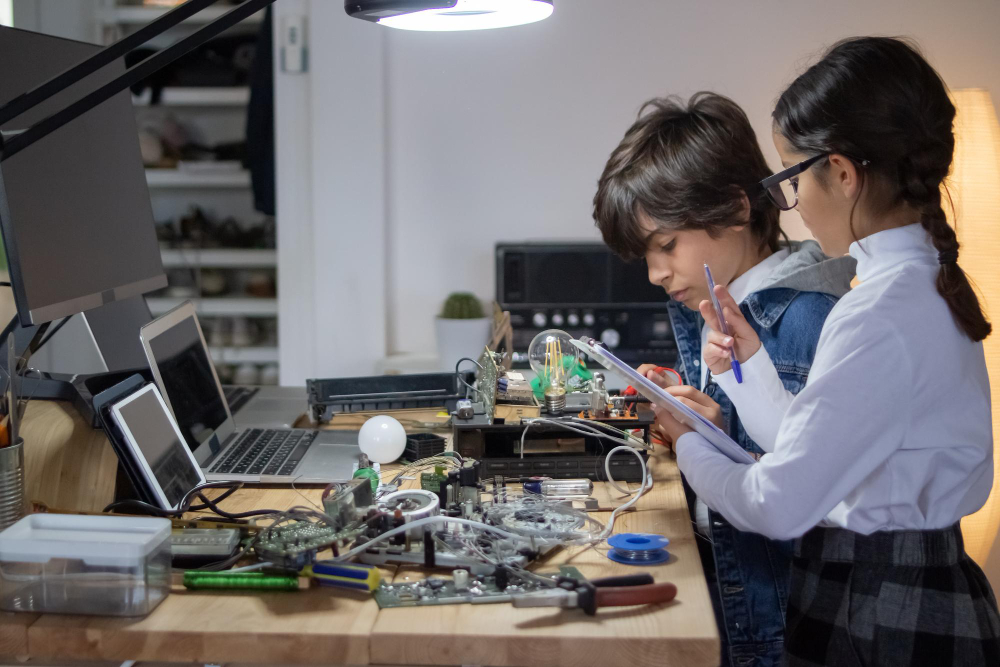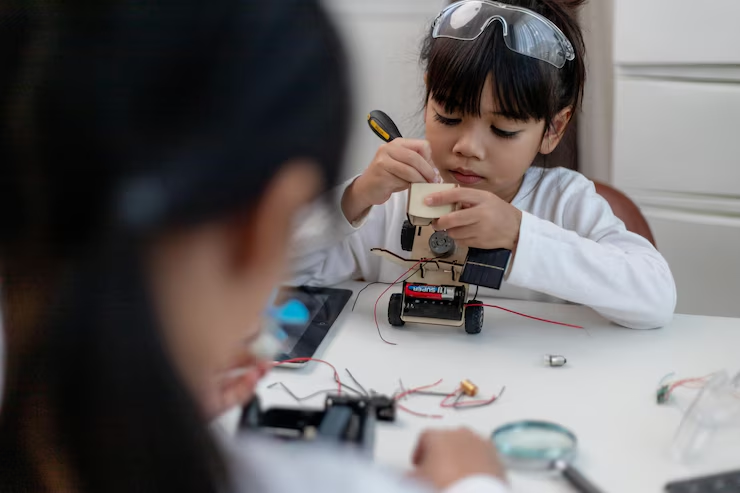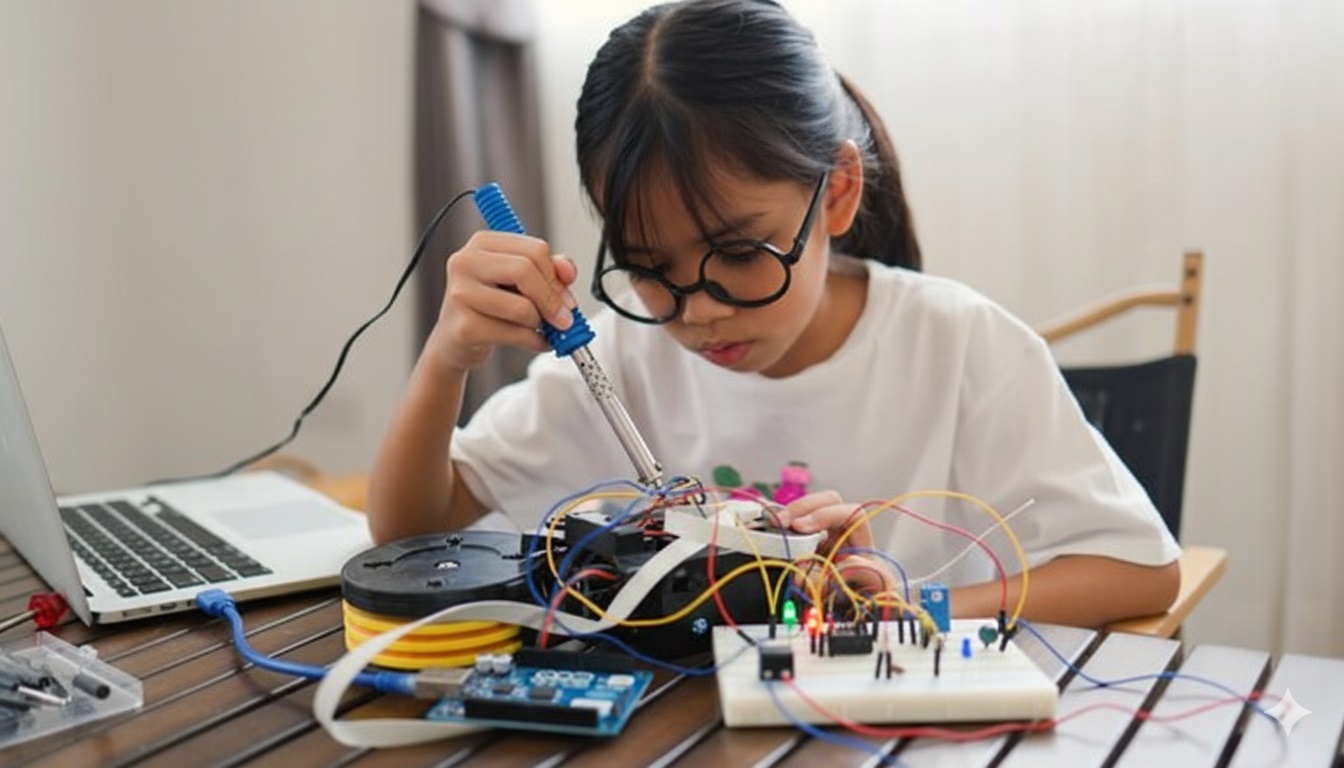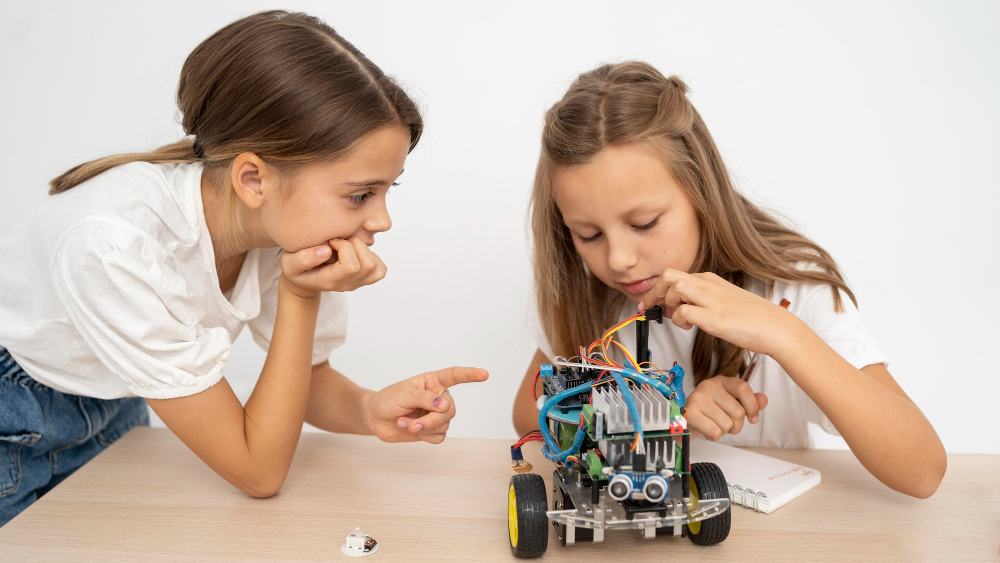Beyond Screens: The Power of Physical Computing for Kids
2025-10-14
Beyond Screens: The Power of Physical Computing for Kids

Technology is everywhere, but real learning happens when kids can see and touch how it works. At Clubhouse Engineers, we go beyond screens to teach physical computing, a hands-on approach that helps kids connect code with real-world results.
When a student writes code to make an LED blink or a motor spin, learning comes alive. They don’t just watch technology; they build it, test it, and understand it.
What Is Physical Computing?
Physical computing turns abstract code into tangible experiences.
Physical computing combines coding with hardware like sensors, LEDs, buzzers, and motors. Instead of controlling characters on a screen, kids make circuits respond to the real world.
For example, they might build a light-activated night lamp, a temperature monitor, or a mini robot. Each project teaches them how software and hardware work together to bring technology to life.
Why Hands-On Learning Matters

Learning by doing builds confidence and understanding.
When kids work with real components, they see the results of their code immediately. If an LED doesn’t light up, they figure out whether it’s the wiring, the resistor, or the code. That process builds patience, curiosity, and persistence, skills screens alone cannot teach.
From Virtual to Real-World Problem Solving

Combining code with circuits helps students think like inventors.
Virtual coding exercises can teach logic, but real innovation happens when ideas move from screen to circuit. Physical computing challenges students to design systems that sense, react, and adapt like real technology does in the world.
Building Real Skills for a Real Future

Students see their creativity in action, one wire at a time.
Through physical computing, students gain both technical and thinking skills:
- Systems Thinking — seeing how hardware, software, and sensors connect
- Problem Solving — troubleshooting circuits and logic together
- Creativity — designing projects that respond to their ideas
- Confidence — building something they can see and control
Learning this way helps kids understand not just what technology does, but how it works and how they can use it to solve real problems.
Clubhouse Engineers: Beyond Screens
We are a STEM enrichment center for students aged 9 to 17 in the Greater Toronto Area. Our programs bring learning to life through hands-on robotics, coding, and physical computing projects that spark creativity and confidence.
